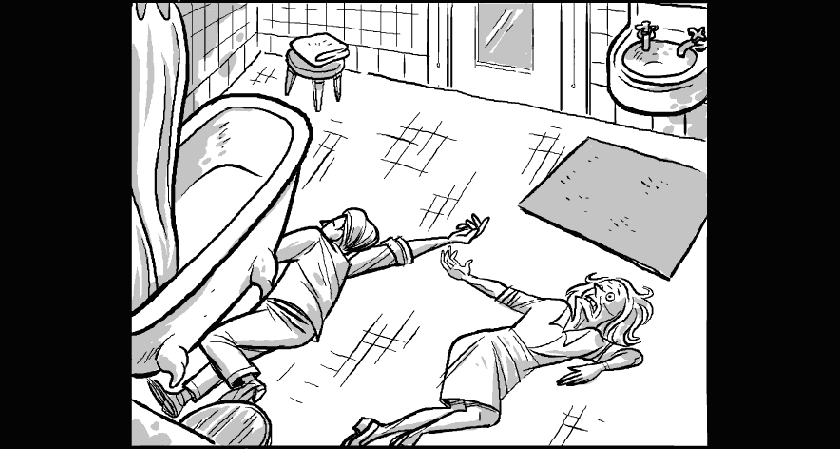‘The Poisoner’s Handbook’ comes to PBS

A comic book style interactive with "The Poisoner’s Handbook" helps you learn how forensic toxicology worked in the 1920s.
Courtesy of WGBH
Share this:
- Share via email (Opens in new window) Email
- Click to share on Facebook (Opens in new window) Facebook
- Click to share on X (Opens in new window) X
- Click to share on Pinterest (Opens in new window) Pinterest
- Click to share on Reddit (Opens in new window) Reddit
- Share to Google Classroom (Opens in new window) Google Classroom
- Click to print (Opens in new window) Print
Many teens question how much chemistry really matters in their daily lives. Now, the Public Broadcasting System, or PBS, offers educators one compelling answer. A new show in the network’s American Experience series highlights the role chemistry plays in life — and death. Called “The Poisoner’s Handbook,” this story offers up murder, corruption, heroes and more than a few molecular shenanigans. And PBS offers additional online resources to help teachers take such forensic chemistry on into their classrooms.
Based on the book by author Deborah Blum, “The Poisoner’s Handbook” is a two-hour show that takes viewers into Jazz Age New York City, an era of Prohibition and poisonings. In the early 1900s, potent poisons were within arm’s reach in most medicine cabinets, back alley bars and gardener sheds. Many criminals got away with murder — literally — because coroners who dealt with the bodies were corrupt.
Into this culture steps Charles Norris, a doctor determined to take a scientific look at death. He becomes New York City’s first medical examiner, and brings with him the talented chemist Alexander Gettler. Together, the pair begins to build the field of forensic toxicology in the United States, based on techniques that Norris studied in Europe. By finding poisons in a corpse, they often were able to help free the innocent or bring the guilty to justice. In the end, their work spurred the U.S. government to create the Food and Drug Administration, the national agency that protects us from the potential toxic side effects of industrial advances.
“The Poisoner’s Handbook” is a creepy tour of murder, poisons and forensics. The show is divided into chapters, each covering a different case. Real footage from the 1920s and ‘30s is augmented by contemporary reenactments of the poisonings and their investigations. The lives and work of Norris and Gettler are presented alongside featured cases, walking viewers through the careful chemistry used to confirm each poisoning. (There is a particularly nice description of spectroscopy and how it can tell elements apart.) An inspiring story, this show emphasizes not only the role science can play in establishing a crime, but also how a few determined researchers can make the difference between freedom and the electric chair.
The show moves quickly, with plenty of gore. Forensic chemistry during the Roaring ‘20s involved a lot of blood and bodies. Because it is presented as both history and science, the show could be very effective when combined with an American history course. Of course, the show could be incorporated especially nicely into a high school chemistry class. But a note of caution: There is one section towards the end that makes reference to the sexual abuse of a minor. Some people may find this segment inappropriate for young viewers.
‘The Poisoner’s Handbook’ will air Tuesday, January 7. Check local listings for the time. Starting the next day, the website will make “The Poisoner’s Handbook” available as a video that you can show in the classroom.
PBS also has developed a series of teaching resources. A series of comic strips detail some of the crimes. Students can interact with these strips at various points in the story, clicking on items to detect different poisons. There also is a step-by-step guide for a series of experiments that teachers can do in the classroom to simulate testing shown in the TV show, such as the Prussian Blue Cyanide Test (don’t worry: no real poisons are involved). The experiments do not explain the molecular changes that underlie the results. But they do provide nice visual aids that teachers can use as they teach the chemistry involved.
“The Poisoner’s Handbook” is a fascinating portrayal of chemistry at its most deadly. As such, it offers to bring a little graphic drama into the science classroom. Who knows, with a little help from PBS, some teen skeptics may no longer view classroom chemistry as deathly dull, but instead as engrossingly macabre. And, of course, relevant.
Power Words
chemistry The field of science that deals with the composition, structure and properties of substances and how they interact with one another. Chemists use this knowledge to study unfamiliar substances, to reproduce large quantities of useful substances, or to design and create new and useful substances.
coroner A public official charged by the courts to oversee the review of data collected as part of the investigation into any suspicious deaths.
element (in chemistry) Each of more than one hundred substances for which the smallest unit of each is a single atom. Examples include hydrogen, oxygen, carbon, lithium and uranium.
forensics The use of science and technology to investigate and solve crimes.
medical examiner A government official, usually a medical doctor, charged with investigating suspicious deaths and injuries.
Prohibition An era — from 1920–1933 — when the United States had banned the production and sale of all alcoholic drinks, such as beer, wine and hard liquor.
spectrometer An instrument used by chemists to measure and report the wavelengths of light that it observes. The collection of data with this instrument, a process known as spectrometry, can help identify the elements or molecules present in an unknown sample.
toxicology The branch of science that probes poisons and how they disrupt the health of people and other organisms.